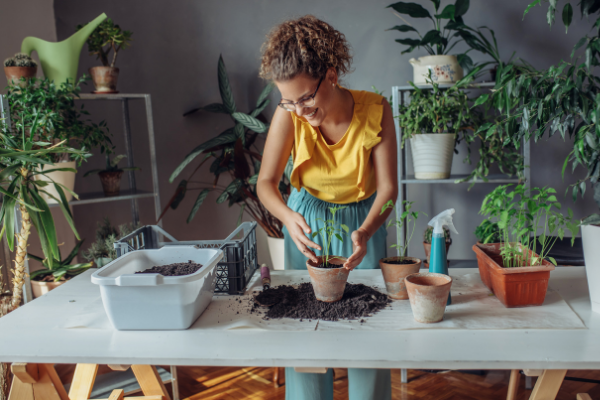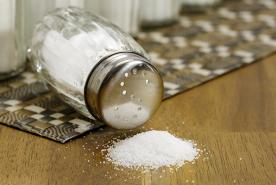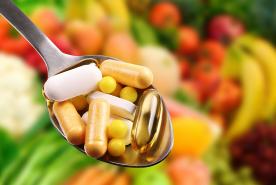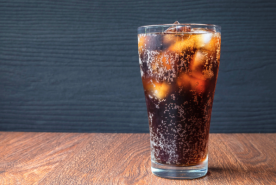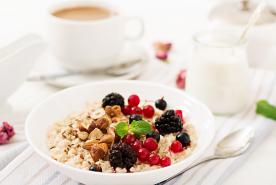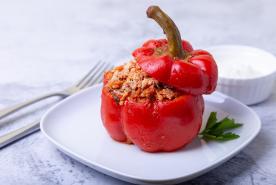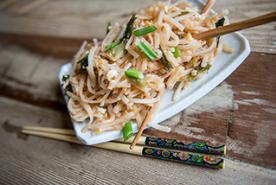April 21, 2022
You don’t need a green thumb to start growing your own fruits and vegetables. These beginner plants can be grown indoors, year-round.
Why plant-based diets can be great for some people with kidney disease
Plant-based diets can be extremely beneficial for many people with chronic kidney disease (CKD) at any stage and those who are at risk of developing kidney disease. Consuming less meat and more plant-based foods may even help prevent or slow the progression of kidney disease, type 2 diabetes, high blood pressure, and heart disease.
Learn how to follow a plant-based diet.
Know which fruits and vegetables are okay for you to eat
There are a variety of plants that people with kidney disease can eat. However, it's important to always check with a healthcare professional before changing your diet. Vegetables and fruits have essential nutrients, but many also contain potassium, which some people with kidney disease may need to limit. Your healthcare team and a registered kidney dietitian are the best resources to help you determine which foods you should and should not eat.
Find a registered kidney dietician near you.
Year-round, indoor gardening
You don't need a large backyard or warm temperatures to grow your food. Here are six easy fruits and vegetables you can grow inside no matter the time of year.
1. Alfalfa sprouts
Alfalfa sprouts are a delightfully crunchy, mild-tasting, and versatile ingredient that can be added to just about anything. They are packed with nutrients and are extremely easy to grow, so you'll never run out.
What you'll need:
- Alfalfa seeds
- Large mason jar
- Sprouting screen or lid
Directions:
- Rinse seeds
- Put in jar, cover in screen or sprouting lid, and soak overnight in cool water
- Drain, put the screen back on, and place the jar on its side to dry for 8 hours
- Rinse, drain and repeat every 2-3 days until you see sprouts
- Move to indirect sunlight and continue rinsing and draining for an additional three days
- Cut the shoots and eat
Sprinkle the sprouts over salads, add them to wraps, throw them in casseroles, or toss them in a stir fry.
2. Carrots
Carrots are a staple in many dishes and for many good reasons. They're hearty, nutritional, and can be prepared and eaten in various ways.
What you'll need:
- Large container at least 12 inches deep
- Potting soil
- Seeds
Directions:
- Plant seeds 1/4 inch deep with 1 inch of space between seeds
- Water the soil (not the plant), keeping it moist
- Harvest after two to three months
Try this heavenly glazed carrot recipe that could easily be mistaken for a dessert and not a side dish. It's appropriate for people with diabetes, those with CKD Stages 1 through 4, and kidney transplant recipients.
3. Kale
Kale is a versatile leafy green vegetable, rich in antioxidants, vitamins, and minerals. When eaten raw, it's low in potassium, making it an excellent salad base for people who need to limit their potassium intake.
What you'll need:
- Kale cuttings
- Mason jar
- Potting soil
- Large container 12 inches deep and 12 inches wide
Directions:
- Cut all leaves off a kale stalk
- Soak stalk in a mason jar (¾ full of water) on a sunny windowsill for two weeks
- Transfer to the large container, giving the plant 6 hours of sunlight a day
- Replace water once a week
- Harvest after 30 days
Add your kale to this linguine with chickpeas, broccoli, and ricotta recipe. This sophisticated dinner takes less than an hour to prepare and is a good choice for people with diabetes, those with CKD stages 1 through 5, people on dialysis, and kidney transplant recipients.
4. Lettuce
Lettuce is a low-calorie, low carbohydrate food that can be used in salads, as a bread substitute in wraps, or added to soups and other dishes.
What you'll need:
- Lettuce head from the grocery store
- Bowl
- 6-inch container
- Potting soil
Directions:
- Cut off the bottom 1 ½ inch of the head of lettuce
- Cover in water and set on a sunny windowsill
- Change water every two days until you notice roots
- Plant in soil and water frequently for about two weeks
- Harvest
Give a satisfying crunch to this BBQ pineapple chicken using your freshly grown produce as a lettuce wrap. This chicken recipe is good for people with diabetes; CKD stages 1 through 5, people on dialysis, and kidney transplant recipients.
5. Herbs
Herbs are a great way to flavor food without adding salt. Here are just a few we recommend: basil, bay leaf, chervil, chives, cilantro, marjoram, oregano, dill, parsley, thyme, tarragon, rosemary, and mint.
What you'll need:
- 4- to 6-inch container
- Seeds
- Potting soil
Directions:
- Plant according to the seed packet directions
- Keep on a sunny windowsill
- Water frequently and mist weekly
- After a month, you'll be able to take cuttings to use
- Add a herb or vegetable fertilizer to the soil every few months
Learn how to use your herbs to flavor your dishes here.
6. Strawberries
Strawberries are a treat to the senses. They are fun to look at, smell divine, and burst with flavor. Use your homegrown strawberries to make fresh desserts, add them to smoothies, or eat straight from the vine.
What you'll need:
- Vertical or 6-inch container
- Seeds
- Potting soil
Directions:
- Freeze seeds for a month
- Push four seeds into a 6-inch, soil-filled container. For larger pots, plant four seeds every 4 inches
- Give plants 6 hours of sunlight a day and keep the soil moist
- Once in bloom, hand pollinate the plants by gently shaking the plant
- Once the berries ripen and turn bright red, harvest
Blend your beautiful strawberries into this very berry tofu smoothie, appropriate for people with diabetes, CKD stages 1and 2, and kidney transplant recipients.
